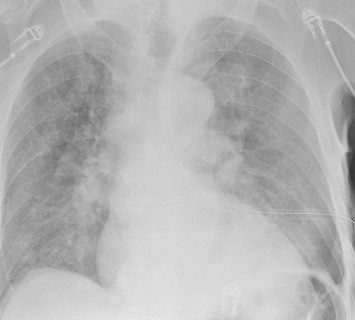Elderly falls have reached epidemic proportions. Although the most common injury from these falls is rapidly become head injury with or without intracranial blood, rib fractures are a close second. Treatment of rib fractures usually involves multiple interventions such as pulmonary toilet, multimodal pain management, and therapies to enhance mobility. And in some cases, operative fixation is entertained.
Rib fracture fixation has typically been used in patients who are dependent on a ventilator due to their fractures, or have significantly displaced or very painful fractures. There is little data on the impact of using rib plating in elderly patients. The group at New York Presbyterian Hospital in Queens NY analyzed one year of TQIP data to assess the impact of this technique in trauma patients older than 65.
They reviewed the data, looking at mortality, intensive care unit and hospital lengths of stay, tracheostomy, and pneumonia rates. They matched patients who had rib fixation with similar patients who did not. They then sliced and diced the data to see if there were differences in these outcomes with early vs late (> 48hrs) repair.
Here are the factoids:
- The authors obtained data on almost 14,000 patients meeting study criteria, but of those only 278 underwent rib fixation and 220 were eligible for matching
- Overall, patients who underwent fixation tended to have higher rates of flail chest, earlier intubation, higher injury severity score, and increased intensive care unit admission rates
- Mortality for all patients who underwent fixation was significantly lower than those who did not (4% vs 10%)
- The early fixation group had significantly fewer ventilator associated penumonias, shorter ICU length of stay (6 vs 10 days) and shorter hospital length of stay (9 vs 15)
- There were no differences in mortality or ventilator days
The author’s conclusions matched the bullet items above.
My comment: This is one of those papers that demonstrates something that we should have already recognized. I wish I had thought of it! It points us toward considering this procedure in our elderly rib fracture patients. Even though patients undergoing fixation were sicker and had more serious injuries, their survival rate was significantly higher.
However, it also leaves us with more work to do. It is a database study, so it’s not possible to go back and find additional information on the study subjects. Knowing selection criteria and operative details would be very helpful. And the overall numbers are low, so more benefits may come to light if we had the statistical power to focus on mortality and ventilator days.
Here are my questions for the authors and presenter:
- Have you considered using a larger dataset to get additional information? The mortality and ventilator days in the early vs late subsets were not statistically significant. This might be due to the lack of statistical power from the small number of patients.
- Can you speculate on the financial impact of using expanding the use of rib fixation in the elderly? The clinical impact is clear. It looks like the cost savings to the hospital from the reduced ICU and hospital length of stay alone would far offset the cost of performing the procedure, especially if done early.
- What selection criteria should be used for choosing the right patients for the procedure? This is probably outside the scope of the study, but it would be interesting to hear you speculate.
This is an important paper and I really look forward to hearing the details!
Reference: Rib fixation in geriatric trauma: mortality benefits for the most vulnerable patients. EAST Annual Assembly abstract #3, 2020.




